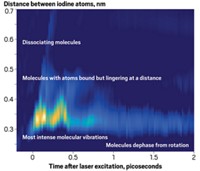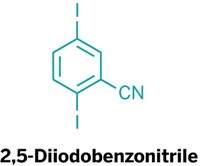Advertisement
Grab your lab coat. Let's get started
Welcome!
Welcome!
Create an account below to get 6 C&EN articles per month, receive newsletters and more - all free.
It seems this is your first time logging in online. Please enter the following information to continue.
As an ACS member you automatically get access to this site. All we need is few more details to create your reading experience.
Not you? Sign in with a different account.
Not you? Sign in with a different account.
ERROR 1
ERROR 1
ERROR 2
ERROR 2
ERROR 2
ERROR 2
ERROR 2
Password and Confirm password must match.
If you have an ACS member number, please enter it here so we can link this account to your membership. (optional)
ERROR 2
ACS values your privacy. By submitting your information, you are gaining access to C&EN and subscribing to our weekly newsletter. We use the information you provide to make your reading experience better, and we will never sell your data to third party members.
Analytical Chemistry
Light Pulses Get Shorter
Dynamics: ‘Light transients’ will enable control of electrons on attosecond scale
by Jyllian Kemsley
September 12, 2011
| A version of this story appeared in
Volume 89, Issue 37

A beam of light can be split and recombined into ultrashort pulses with waveforms that have sub-femtosecond features, reports an international team of researchers (Science, DOI: 10.1126/science.1210268). The work opens up a new way to observe and control electron dynamics.

Scientists can also control the structure of the shorter features depending on how the light pulses are combined. That will allow time-dependent study of electron dynamics, says Paul Corkum, head of the Joint Attosecond Science Laboratory of the University of Ottawa, in Ontario, and Canadian National Research Council. He was not involved in the work.
To create the pulses, Eleftherios Goulielmakis, a physicist at Germany’s Max Planck Institute for Quantum Optics, and colleagues used a laser to produce a band of light from 330 to 1,100 nm. They then separated the light into three bands of near-infrared, visible, and ultraviolet-visible light. Finally, they brought pulses of the three bands back together at varying times so that the interference of the pulses created distinct waveforms with sub-femtosecond structure. The pulses are also intense, with energies on the order of 0.3 mJ. The researchers call the pulses light transients.
The light transients approach can also be combined with standard attosecond spectroscopy, in which a femtosecond laser is used to drive an electron out and then back into an atom to produce a burst of weak X- rays of attosecond duration. Pairing the two techniques enables researchers to examine electron dynamics via pump-probe experiments at the attosecond timescale, Goulielmakis says.
The group used such a pump-probe method to study ionization of krypton atoms, ionizing them with the light transients and probing them with attosecond X-rays. Goulielmakis and colleagues used the results to quantitatively evaluate the ionization rate and population dynamics of the system. They found that their experimental results agreed with theoretical predictions.
“This is very close to a true attosecond-attosecond experiment, and the richness of detail is exquisite,” says Stephen R. Leone, a professor of chemistry and physics at the University of California, Berkeley, and director of the Chemical Sciences Division at Lawrence Berkeley National Laboratory. Leone collaborated with Goulielmakis and others on predecessor experiments but was not involved in the current work.
Goulielmakis and colleagues now plan to use the technique to probe and direct the electron dynamics and chemistry of other systems, from molecules such as glycine to nanostructures.




Join the conversation
Contact the reporter
Submit a Letter to the Editor for publication
Engage with us on Twitter